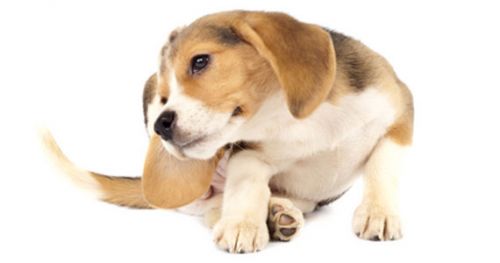Signs your dog has fleas

Fleas are parasitic six-legged insects the feed on the blood of their hosts. It can jump easily to your pet. Flea can lead to the dangerous for your dog. On average a female flea will lay almost 50 eggs per day. Fleas are more than just blood-sucking insetcs, it can cause diseases in dogs such as The flea allergy dermatitis, etc. So you should notice the signs of your dog has fleas.
1. Excessive scratching or chewing
- Fleas seek out your dog's blood as a food. When fleas bites, it secretes saliva that causes an itching sensation on the skin affecting the things, tail base, belly, upper arms, armpits and side. the fleas can lead to many problems such as flea allergy dermatitis or secondary bacterial skin infections.
2. Pale Gums
- Pale Gums is a sign of anemia and can lead to indication your dog has a serious case of flea infestation, bacuse the amount of new red blood cells produced by your pet isn't sufficient enough to combat the loss of blood fleas are extracting form the animal
3. Skin problems
- The flea can induce a serious allergic reaction for the dog, causing hot spots or rashes. You can notice form the red patches of your dog's skin.
4. Flea dirt on fur
- Flea dirt is flea waste and blood form biting and sucking of the exposed pet. You can notices small black or reddish-brown specks on his body. If you are unsure whether the black spots are flea dirt, the best way to determine this is to grab a wet paper towel and grab the small clumb. It it is flea dirt, it will turn a dark reddish color when it is wet.
5. Hair loss
- Fleas can lead to your hair loss or alopecia for dog. Dogs may also pull out some of its own hair due to the continuous biting or licking of the flea bite areas.
*** Credit from : http://www.petmd.com

 View cart
View cart Checkout
Checkout
 Flea Control for Cat
Flea Control for Cat  How to check worms in cat
How to check worms in cat 
